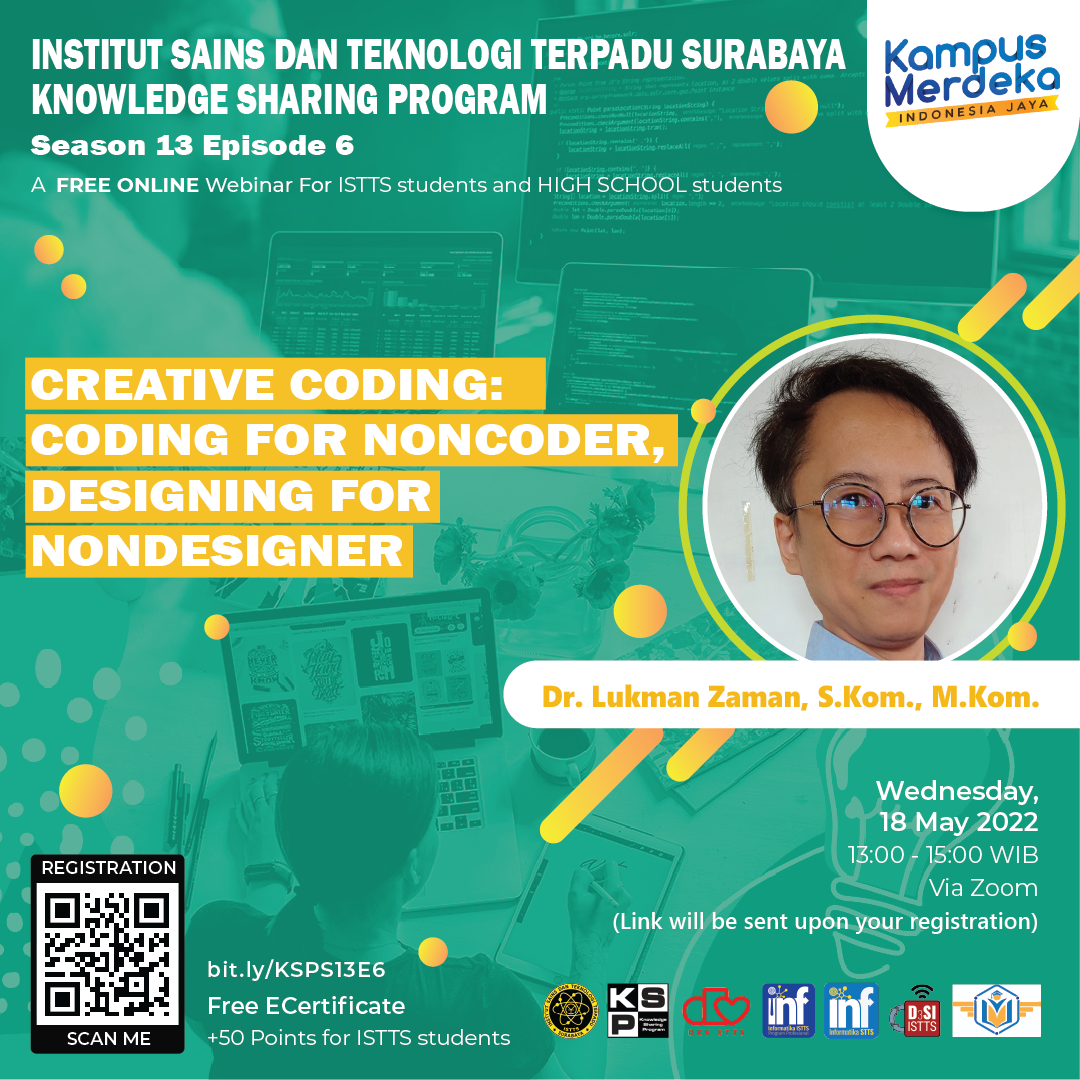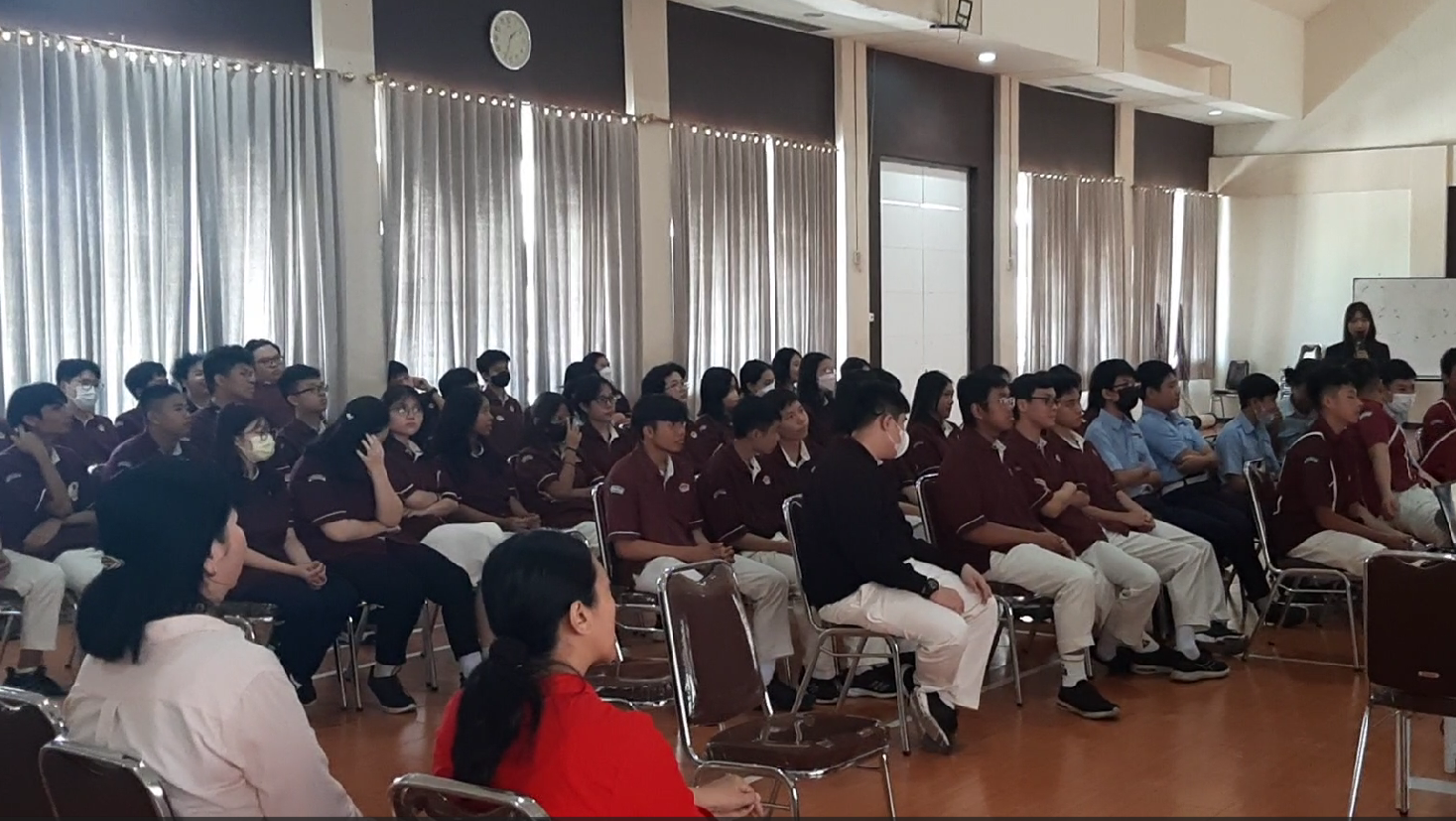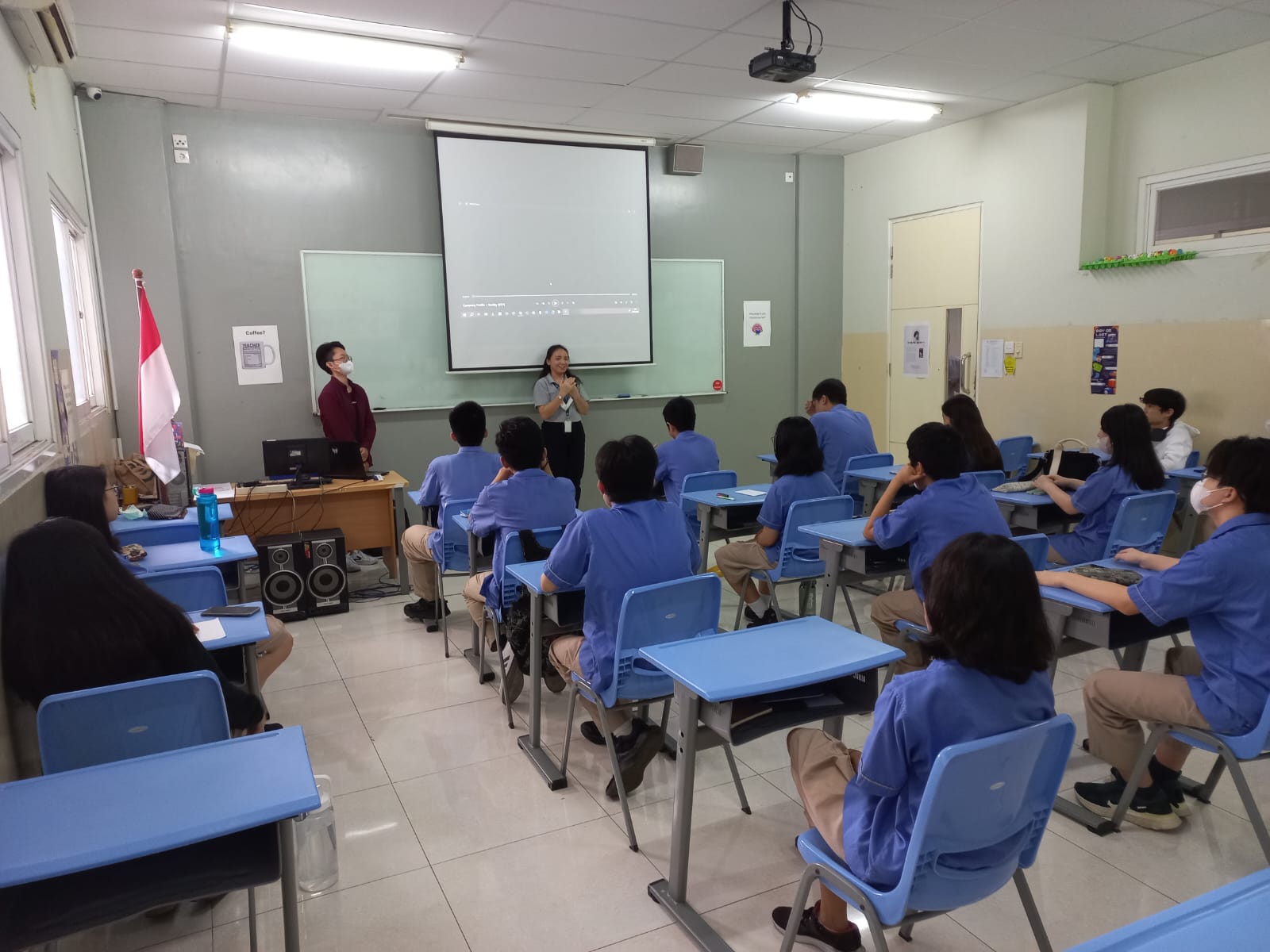
Creative Coding: Coding For Noncoder, Designing For Nondesigner
 KSP Season 13 in its last episode with the title "Creative Coding: Coding For Noncoder, Designing For NonDesigner" was held on May 18, 2022 and presented by Mr. Dr. Lukman Zaman, S. Kom., M. Kom. He is one of the lecturers in the Department of Informatics Engineering and S1 DKV ISTTS. This webinar was held online via Zoom and the live streaming of KSP ISTTS's Youtube Channel which took place at 13.00 WIB.
KSP Season 13 in its last episode with the title "Creative Coding: Coding For Noncoder, Designing For NonDesigner" was held on May 18, 2022 and presented by Mr. Dr. Lukman Zaman, S. Kom., M. Kom. He is one of the lecturers in the Department of Informatics Engineering and S1 DKV ISTTS. This webinar was held online via Zoom and the live streaming of KSP ISTTS's Youtube Channel which took place at 13.00 WIB. In this webinar, Mr. Lukman taught so much about the basics needed in coding and design. In addition, Mr. Lukman also gave a short demonstration to explain the material he gave. Mr. Lukman said that the basis of coding is order, while the basis of design is form. In order to create the required patterns, it is important to have proficiency in basic mathematics. Basic mathematics is crucial in the world of coding and design, so mastery of this field is a must-have. Mr. Lukman then showed some patterns that can be made with the help of math in coding. He also managed to form various forms that he wanted. In addition, Mr. Lukman explained about the use of Fooplot to explore mathematical formulas of shapes. He explained that the use of Fooplot is easier to apply because it does not use coding and only plays with sin and cos to get the desired patterns and shapes. Mr. Lukman said that if we often use Fooplot, we can sharpen our intuition in making the desired patterns. Another plus is that no rules are enforced. Apart from using Footplot, Mr. Lukman explained another way to create patterns, namely by using Perlin Noise. Pak Lukman further explained that Perlin Noise has an advantage, namely that it can be used to create random patterns that are difficult for the brain to digest. Similar to Footplot, Perlin Noise also uses mathematical formulas to create these random patterns. Mr. Lukman's explanation can be understood clearly because apart from the demonstration, Mr. Lukman also provides examples that are presented directly from the slides.
In this webinar, Mr. Lukman taught so much about the basics needed in coding and design. In addition, Mr. Lukman also gave a short demonstration to explain the material he gave. Mr. Lukman said that the basis of coding is order, while the basis of design is form. In order to create the required patterns, it is important to have proficiency in basic mathematics. Basic mathematics is crucial in the world of coding and design, so mastery of this field is a must-have. Mr. Lukman then showed some patterns that can be made with the help of math in coding. He also managed to form various forms that he wanted. In addition, Mr. Lukman explained about the use of Fooplot to explore mathematical formulas of shapes. He explained that the use of Fooplot is easier to apply because it does not use coding and only plays with sin and cos to get the desired patterns and shapes. Mr. Lukman said that if we often use Fooplot, we can sharpen our intuition in making the desired patterns. Another plus is that no rules are enforced. Apart from using Footplot, Mr. Lukman explained another way to create patterns, namely by using Perlin Noise. Pak Lukman further explained that Perlin Noise has an advantage, namely that it can be used to create random patterns that are difficult for the brain to digest. Similar to Footplot, Perlin Noise also uses mathematical formulas to create these random patterns. Mr. Lukman's explanation can be understood clearly because apart from the demonstration, Mr. Lukman also provides examples that are presented directly from the slides. After giving the material, the committee from KSP gave time for participants to ask questions if they still didn't understand the material given by Mr. Lukman. Many participants enthusiastically asked a number of questions because they were interested in the material provided by Mr. Lukman. After the question and answer session between the KSP participants and Mr. Lukman was over, the committee ended this KSP episode. KSP closed with a documentation session and filling in attendance which can be accessed via Google Form.
After giving the material, the committee from KSP gave time for participants to ask questions if they still didn't understand the material given by Mr. Lukman. Many participants enthusiastically asked a number of questions because they were interested in the material provided by Mr. Lukman. After the question and answer session between the KSP participants and Mr. Lukman was over, the committee ended this KSP episode. KSP closed with a documentation session and filling in attendance which can be accessed via Google Form.


